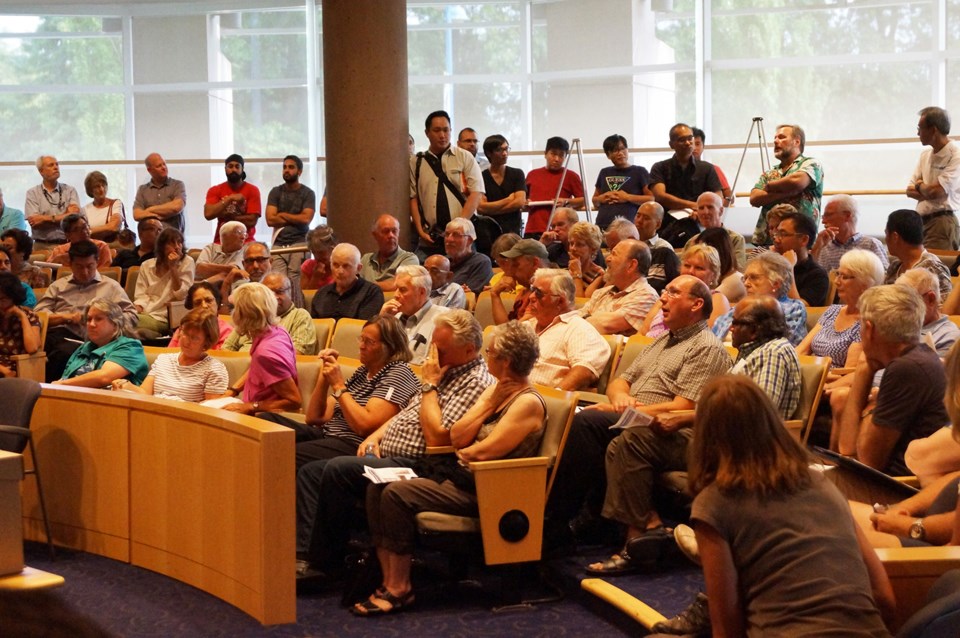It’s enough to make your eyes bleed.
Trying to wade through the verbiage regarding house massing (even that’s a new one) in Richmond is not for the faint of heart.
My hat goes off to all those dedicated folks (and there’s a surprising number of them) who learn the language and study the bylaws, recommendations and amendments — not to mention sit through a city council meeting until almost midnight — to educate themselves and advocate for what, they believe, is in the community’s best interest.
And thank goodness they do because if ever there was a case in which the devil’s in the detail, this is it. The smallest change in wording can have the largest impact on neighbourhoods.
In today’s paper, we have a story regarding Monday night’s public hearing on house massing. And, yes, it really did go till almost midnight — astonishing, considering how much ink has already been spilled on this.
The debate about super-sized houses has been going on in Richmond for decades. This latest kick at the controversy aims to formulate a housing bylaw that balances complaints from residents who are tired of seeing mega homes rising up on what had been tree-lined streets of modest 30-year-old homes, against builders who are supplying a demand and argue for a homeowner’s rights to build the kind of house they want.
We’ve already been down this road with Land Use Contracts as well as homes on agricultural land; this bylaw will apply to homes that fall outside of either of those categories.
Given that there has been so much debate on this already, it’s a bit bizarre that some residents are complaining about inadequate notification and information.
In fact, one self-appointed council watchdog has launched a formal complaint with the B.C. Ombudsman, saying the public had insufficient time to study the material prior to the meeting.
It seems the issue is not so much that people didn’t know what city staff had recommended. Rather, they weren’t privy to the changes to those recommendations put forward by the Richmond Home Builders Group (RHBG).
To that, I’d say they have a point, particularly considering council ended up accommodating the builders by adopting an amendment that allows part of the main floor to be somewhat larger and closer to its neighbour than staff recommended. (The numbers are on page 7.) Actually, have a look at those numbers and recommendations. Let me know what language you’d call that.
Point being, this is mind boggling stuff — presented in the middle of summer, no less. Allowing people enough time to digest the information may not have been a legal requirement, but it’s certainly a moral one.



